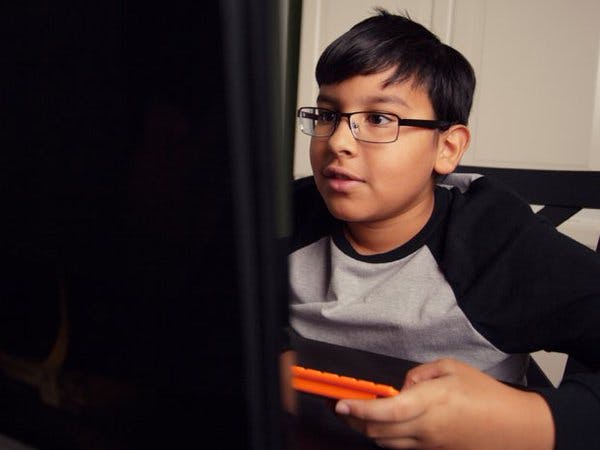5 Steps to Implementing Game-Based Learning in the Classroom [+ Game Examples]
All Posts
Many teachers struggle to smoothly incorporate games into lessons due to time and logistical issues, yet see game-based learning (GBL) as a way to engage students and appeal to diverse learning styles.
Research has continuously shown such advantages. For example, video games stimulate an increase in midbrain dopamine to help store and recall information, according to a 2014 article in the journal of Learning, Media and Technology.
But when admins and teachers don’t seamlessly introduce a game, students may be slow to adopt it and reap these benefits.
Here are five steps to integrating game-based learning into your classroom:
1. Determine the Purpose of Game-Based Learning
Deciding how you’ll use a game will narrow your search, helping you find an appropriate one.
Before researching, determine if you want to use a game for:
- Intervention -- If a student is struggling to demonstrate understanding of core material, you may consider using a game to address his or her trouble spots. The game you choose should therefore deliver content that adjusts itself to player knowledge and learning style. This should help the student gain a better understanding of difficult material.
- Enrichment -- As students master core material, you may want a game that presents content through different media. For example, it may give questions through text, audio, images and more. This should encourage students to challenge themselves as they explore new ways to process the content.
- Reinforcement -- Instead of using games to teach and engage individual students, entire classes can play to reinforce curriculum content. This can also make game-based learning a group activity. Some games have multiplayer features and students may naturally compete against each other to earn higher scores.
Keeping these factors in mind will likely hasten the process of finding a game that meets both teacher and student needs.
2. Play the Game Yourself, Making Sure It Is Aligned with Learning Goals

Playing the game in question will help you determine if it’s aligned with learning goals you’ve set.
After finding a game you think is appropriate, play it and make note of:
- Teacher Control -- Many educational games offer teachers the ability to control content and adjust settings for individual students. For example, some let you match questions to in-class material, delivering them to specific players.
- Intuitiveness -- Whether it’s a physical or video game, it should be easy to use. Students should challenge themselves by processing and demonstrating knowledge of the content -- not by stressing over how the game works.
- Engagement -- Based on the content and how it’s presented, determine if students will enjoy the game. If it’s engaging, students should inherently want to play and, as a result, learn.
- Content Types -- To accommodate diverse learning styles, the game should offer different types of content. For example, an educational math video game may present questions as graphs, numbers and word problems.
- Content Levels -- To address diverse trouble spots and aptitudes, the game should use differentiated instruction principles to adapt content to each player. For example, a language video game may focus more on pronouns with one student than another.
Paying attention to these criteria while playing should help you decide if the game properly supports learning goals.
3. Ensure It Meets Expectations from Parents

Getting buy-in from other teachers or admins may be needed before finalizing your game selection, but parents should also know about your game-based learning plans.
This opens the door to parent participation which, according to oft-cited research from the National Committee for Citizens in Education, is one of the most accurate predictors of student success:
The family makes critical contributions to student achievement, from earliest childhood through high school … When schools engage parents and students, there are significant effects. When parents are involved at school, not just at home, children do better in school and they stay in school longer.
What’s more, you probably don’t want kids telling unaware parents they played an hour of games in class. They may not think of games with educational value.
Sending a letter home, explaining the game’s benefits and possibly providing your email address, may alleviate these concerns. Here’s a letter that Prodigy offers to teachers who sign up for our math game.
Providing this sort of clear communication should smooth the implementation process from both a teacher and administrative perspective.
4. Dedicate Time to Consistent In-Class Play
Sporadic game-based learning may not allow students to reach learning goals as effectively as consistent, scheduled play time. What’s more, it may not be as engaging as possible.
For example, a study published in the journal of Educational Technology and Society found a positive correlation between a structured 40-minute period of educational game play and not only faster recall processes, but improved problem-solving skills. In a classroom with 1:1 device use, make time for game-based learning activities by:
- Including game time as a designated activity in your lesson plan, not an afterthought
- Using a game as an entry ticket, drawing student attention to the lesson’s topic
- Using a game as an exit ticket, allowing students to reflect
In a classroom with limited device use, make time for game-based learning activities by:
- Focusing more on non-digital games, such as board games with educational value
- Creating learning stations, one of which is playing a device-based game
- Playing team games, letting students play in pairs or groups
These options should make it easier to designate time for educational play, seamlessly incorporating game-based instruction into class.
5. Assess Progress Throughout Play, Informing Instruction

Collecting data from the games you implement can uncover student trouble spots and aptitudes, helping you shape in-class instruction.
Data collection will vary depending on the purpose and nature of a game in question.
Usually, it involves a following method:
- In-Game Reports -- Some educational video games feature in-game reports for teachers, which record student performance. For example, charts will contain each player’s marks for a series of questions, letting you click to see more details.
- Self-Reports -- For physical games, or video games without reporting features, you can encourage students to take ownership of their progress through self-reporting. Create a Google Forms spreadsheet for each student. Then, ask them to provide updates.
- Class Discussions -- After playing team games, conducting a class-wide discussion allows each group to share difficulties, progress and accomplishments.
This final step of incorporating game-based learning will give you the information needed to adjust lessons and activities, addressing trouble spots and building on new knowledge.
Infographic
Created by Educational Technology and Mobile Learning, here's an infographic that summarizes the five steps to introducing and using game-based learning in your class:

Examples of Game-Based Learning Options for Your Classroom
1. Video Games

As devices become more readily accessible throughout classrooms, many video games offer comprehensive game-based learning experiences.
Students can play some through downloadable programs, whereas others are accessible online.
For example, Prodigy is a fun online math game that’s curriculum-aligned for grades 1 to 8. You can change the focus of questions to supplement lessons and homework, and view automated reports to examine each student’s progress.
As well as adjusting questions to address student trouble spots, the game generates math problems that use words, charts, pictures and numbers.
2. Adaptations of Common Games

Preparation time varies, but you can create spins on popular games to supplement lessons and units.
For example, you can transform tic-tac-toe into a math game. Start by dividing a sheet into squares -- three vertical by three horizontal. Instead of leaving them blank, put an equation or word problem in each that tests a different ability.
Similarly, you can create your own version of a game that asks fact-based questions, such as Trivial Pursuit.
Introducing this sort of game-based learning in the classroom not only engages students, but doesn’t force you to rely on computers and other digital devices.
3. Original Games
You’re not limited to adaptations and video games. You can create original, interactive content.
This is possible by crafting quiz-, board- and team-based games, as well as using software such as QuoDeck to design and customize simple digital games.
Doing so allows you to completely customize the game-based learning experience.
Game-Based Learning vs. Gamification

As you work to smoothly implement games into your teaching strategy, it helps to understand the differences between gamification and game-based learning.
This is because they are often confused, and each require a separate approach to introduce. Here are the main differences:
- Whereas games have defined rules and objectives, gamification may just be a series of tasks with rewards such as points
- There is a chance of losing in a game but, to motivate students, gamification may not present this possibility
- Although playing a game may be inherently rewarding, gamification may not offer intrinsic rewards
- Whereas building a game can be hard and expensive, gamification is usually easier and cheaper
- Content is typically morphed to fit the story and scenes of a game, but you can add game-like features to your content without making changes to it
Keeping these points in mind should ensure your approach falls in the realm of game-based learning.
Final Thoughts About Introducing Game-Based Learning in the Classroom
Along with the examples and discussion about gamification, use this step-by-step guide to smoothly implement game-based learning in the classroom.
Students should be quick to adopt a given game, and enjoy its benefits as they work to meet learning goals.
Look forward to a more engaged classroom as a result.
Create or log into your teacher account on Prodigy — a fun game-based learning platform that automatically adjusts questions to accommodate player trouble spots and learning speeds. Engaging and curriculum-aligned, it’s used by more than 2.5 million teachers and 100 million students.

Prodigy creates fun and effective game-based learning experiences
Discover how we design, build and deliver incredibly engaging learning experiences for students, teachers and parents.
Learn more


